How will these resources help you?
For millennia, Jerusalem has remained a place of sacred significance for the Abrahamic Faiths. It is a city rich in sacred memory; prophets and saints, royals and influential individuals and pilgrims of different faiths have visited its streets. However, it is a city where innumerable instances of conflict have also been marked. Because of both its incomparable richness and its incomparable conflicts, many RE teachers may find discussing Jerusalem in the classroom challenging. This reading list is designed to offer resources that can equip teachers to address an analysis of Jerusalem, its power and influence, with a greater sense of its history, significance and controversy.
Site of conflict, or city of peace?
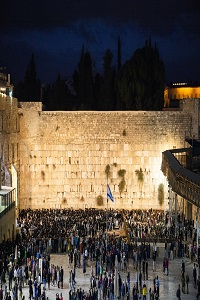
Do you believe in pilgrimage?: Communitas, contestation and beyond
by Simon Coleman, published by SAGE Publications, (2002)
This article is a helpful introduction to two prevailing paradigms for understanding places of pilgrimage: Communitas and contestation. While some scholars have seen pilgrimage as an opportunity for social divisions to fall away, others have argued it can bring contested beliefs to the fore. While the article is relatively dense and delves into the detailed anthropological theory, it provides a good starting place for addressing Jerusalem not solely as the site of conflict but also as a city of peace. Coleman provides some background about how these two ideas of sacred space came about and then expresses his hesitations about seeing them as solely ‘one-dimensional’ (page 361). Coleman evokes sentiments of community and conflict together. As a result, Coleman poses the question: Can communitas instead exist with contestation?
Jerusalem in the Abrahamic Faiths
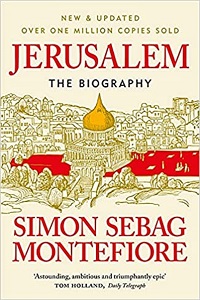
Jerusalem: A Biography
by Simon Sebag Montefiore, published by Weidenfeld & Nicolson, (2020), 9781474614399
This book is perhaps the most readable and accessible history of Jerusalem available. Sebag Montefiore brings his readers into the story of Jerusalem, with its complex web of characters and conflicts. What makes Montefiore’s book particularly engaging is its tableau of diverse perspectives: each chapter is divided into the figures who shaped the Holy City. Readers encounter Josephus’ portrayal of a fallen Jerusalem, Abd al-Malik’s vision for the great Dome of the Rock and Pope Urban II’s apocalyptic call for the first Crusade.
Exploring historical themes
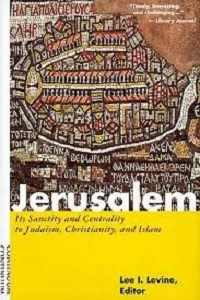
Jerusalem: Its Sanctity and Centrality to Judaism, Christianity, and Islam
by Lee I. Levine, published by Continuum, (1999), 0826410243
Levine’s book on Jerusalem originates from a conference held in 1996 and comprises a series of short essays by some of the most prominent scholars on the history of Jerusalem. While it is over 20 years old, it still provides a glimpse into some relevant debates regarding Jerusalem and its long history. These essays are challenging and give more context than necessary for an RE teacher. However, some illuminate why certain religious beliefs exist about the Holy City. For instance, Alexander’s essay on Jewish beliefs about Jerusalem during the Hasmonean period is helpful for understanding the centrality of Jerusalem in Judaism. Bowman’s article on the earliest Christian text of pilgrimage (the Bordeaux Itinerary) is a rewarding read, as it explains the origins of Christian pilgrimage. It could be valuable to compare an excerpt of this text with a medieval or modern perspective. Lastly, Ayalon’s essay provides a view of Jerusalem as a focal point for Jewish, Christian, and Muslim pilgrimage during the Medieval period.
Site of conflict
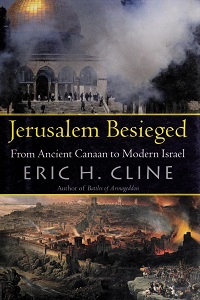
Jerusalem Besieged: From Ancient Canaan to Modern Israel
by Eric H. Cline, published by University of Michigan Press, (2004), 0472113135
This historical survey of Jerusalem draws attention to its many conflicts. Jerusalem Besieged is a useful publication for those curious about the various conflicts over the Holy City.
Audiovisual clip
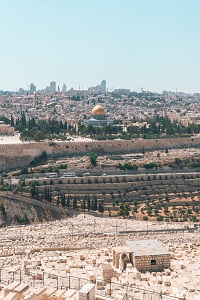
Jerusalem: The Making of a Holy City - Judgment Day
published by BBC Four, (2014)
A quick journey through time outlining the significance of Jersulalem as a holy city for followers of Christian, Islamic and Jewish faiths.
Further Materials
God’s Mountain: The Temple Mount in Time, Place, and Memory by Yaron Z. Eliav, published by Johns Hopkins University Press, (2005), 9780801882135
Find this book
The Land Called Holy: Palestine in Christian History and Thought by Robert L. Wilken, published by Yale University Press, (1992), 9780300054910
Find this book
A Symbol on a Hill by Serge Schmemann, published by The New York Times, (1996)
Read this article
Natalie Smith completed her PhD in the History of Christianity in 2022. Her research focused on the city of Jerusalem and its development in late antiquity through the disciplines of anthropology and geography, comparing the architectural development of the city in comparison to the textual and ideological image promoted by its visitors. Natalie is an RE teacher.
Text © Natalie Smith, 2023
Text © Natalie Smith, 2023



